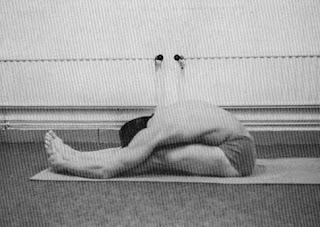Ashtanga Yoga: The Breath of Life
Feeding The Fire
In many languages the words for spirit and breath are the same. In Sanskrit it’s prana, in Latin, spiritus, and in Hebrew, ruach. In Portuguese the word for taking in breath is inspiration, or spirit-in. They believe that an infant literally breathes its spirit into its body with its first breath. We breathe in life. Breath is the source of life and vitality. It is the spirit moving in rhythm in the body. When the breath wanders, the mind is unsteady, but when the breath is still, so is the mind still.
Hatha Yoga Pradipika.
The Victorious Breath • Ujjayi Breathing Breath is the fuel that feeds the internal fire, gives it life, keeps the flame going. The vital life energy, prana, is controlled by the reath. In ashtanga yoga, ujjayi breathing (victorious breath) is used to enrich prana. By breathing through the nose, with the mouth closed, the breath is felt from the throat, roducing a hissing sound. This sound of the breath keeps the mind focused. As the mind begins to wander, the sound of the breath keeps bringing you back home and away from the mumbling, bumbling mind. The mind becomes focused and calm as each pose flows
into the next in concert with the breath. The breath is the link between body and mind.
Practice
Ujjayi Breathing
1. Sit in a comfortable meditative pose or lie in savasana. Become aware of the natural
breathing process and feel the air passing down through the windpipe. Slightly contract the region at the back of the throat as you do when you swallow. Inhale and exhale through the nose with the mouth closed. Make the inhalation and exhalation long, deep and controlled. Practice full yogic breathing and concentrate on the sound. Begin practicing for 3 minutes and progressively work your way up to 10 minutes.
2. Practice as above, but fold the tongue back so that the tip of the tongue presses the back of the soft palate on the roof of the mouth.
3. As you inhale say “sa” to yourself and as you exhale say “ha.” Repeat ten times. Inhalation and exhalation should be of equal duration, smooth and relaxed.
4. Notice your mind wandering as you practice breathing and keep bringing your mind back to the breath.
5. Focus on the exhalation. Notice where your breath normally stops. Increase the fullness of the exhalation.
In many languages the words for spirit and breath are the same. In Sanskrit it’s prana, in Latin, spiritus, and in Hebrew, ruach. In Portuguese the word for taking in breath is inspiration, or spirit-in. They believe that an infant literally breathes its spirit into its body with its first breath. We breathe in life. Breath is the source of life and vitality. It is the spirit moving in rhythm in the body. When the breath wanders, the mind is unsteady, but when the breath is still, so is the mind still.
Hatha Yoga Pradipika.
The Victorious Breath • Ujjayi Breathing Breath is the fuel that feeds the internal fire, gives it life, keeps the flame going. The vital life energy, prana, is controlled by the reath. In ashtanga yoga, ujjayi breathing (victorious breath) is used to enrich prana. By breathing through the nose, with the mouth closed, the breath is felt from the throat, roducing a hissing sound. This sound of the breath keeps the mind focused. As the mind begins to wander, the sound of the breath keeps bringing you back home and away from the mumbling, bumbling mind. The mind becomes focused and calm as each pose flows
into the next in concert with the breath. The breath is the link between body and mind.
Practice
Ujjayi Breathing
1. Sit in a comfortable meditative pose or lie in savasana. Become aware of the natural
breathing process and feel the air passing down through the windpipe. Slightly contract the region at the back of the throat as you do when you swallow. Inhale and exhale through the nose with the mouth closed. Make the inhalation and exhalation long, deep and controlled. Practice full yogic breathing and concentrate on the sound. Begin practicing for 3 minutes and progressively work your way up to 10 minutes.
2. Practice as above, but fold the tongue back so that the tip of the tongue presses the back of the soft palate on the roof of the mouth.
3. As you inhale say “sa” to yourself and as you exhale say “ha.” Repeat ten times. Inhalation and exhalation should be of equal duration, smooth and relaxed.
4. Notice your mind wandering as you practice breathing and keep bringing your mind back to the breath.
5. Focus on the exhalation. Notice where your breath normally stops. Increase the fullness of the exhalation.



Comments